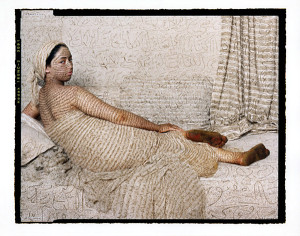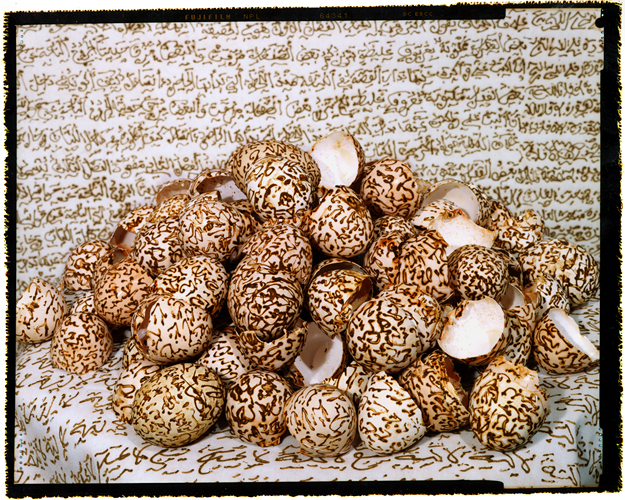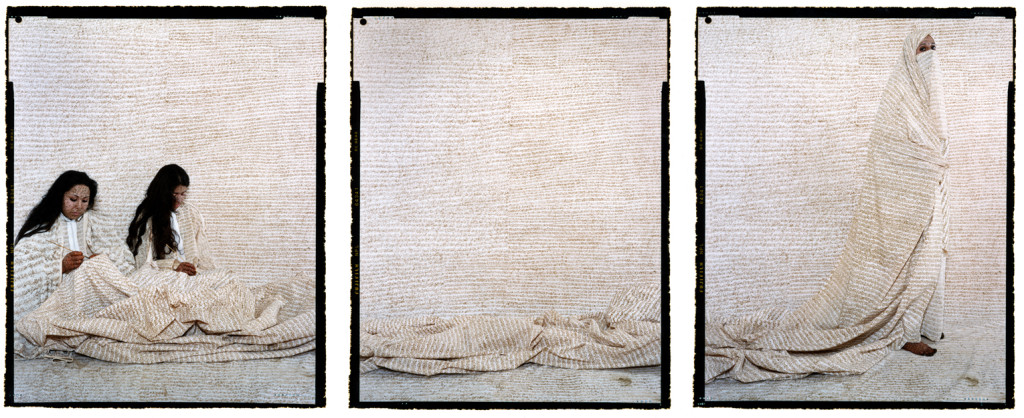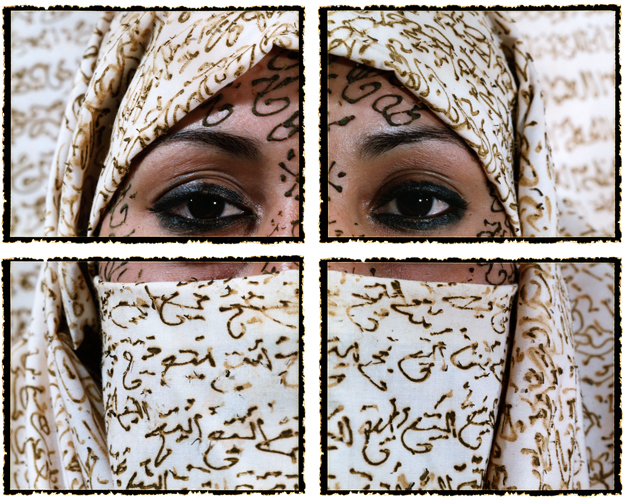
‘La Grande Odalisque, 2008, is in the collection of the Virginia Museum of Fine Arts in Richmond
About:
Lalla A. Essaydi grew up in Morocco and now lives in USA where she received her MFA from the School of the Museum of Fine Arts/TUFTS University in May 2003. Essaydi’s work is represented by Howard Yezerski Gallery in Boston and Edwynn Houk Gallery in New York City. Her work has been exhibited in many major international locales, including Boston, Chicago, Minneapolis, Texas, Buffalo, Colorado, New York, Syria, Ireland, England, France, the Netherlands, Sharjah, U.A.E., and Japan and is represented in a number of collections, including the Williams College Museum of Art, The Art Institute of Chicago, the Fries Museum, the Netherlands, and The Kodak Museum of Art.
Her art, which often combines Islamic calligraphy with representations of the female body, addresses the complex reality of Arab female identity from the unique perspective of personal experience. In much of her work, she returns to her Moroccan girlhood, looking back on it as an adult woman caught somewhere between past and present, and as an artist, exploring the language in which to “speak” from this uncertain space.
 Harem.
Harem.
Her paintings often appropriate Orientalist imagery from the Western painting tradition, thereby inviting viewers to reconsider the Orientalist mythology. She has worked in numerous media, including painting, video, film, installation, and analog photography.
“In my art, I wish to present myself through multiple lenses — as artist, as Moroccan, as traditionalist, as Liberal, as Muslim. In short, I invite viewers to resist stereotypes.” Text website artist)
 Converging Territories, Apparel #1..
Converging Territories, Apparel #1..
About 2:
“In a sense, my work is haunted by space, actual and metaphorical, remembered and constructed. My photographs grew out of the need I felt to document actual spaces, especially the space of my childhood. At a certain point, I realized that in order to go forward as an artist, it was necessary to return physically to my childhood home in Morocco and to document this world which I had left in a physical sense, but of course, never fully in any deeper, more psychological sense. In order to understand the woman I had become, I needed to re-encounter the child I once was. I needed to return to the culture of my childhood if I wanted to understand my unfolding relation to the “converging territories” of my present life. This culture, and the space of my childhood within it, was defined for me by specific domestic spaces, ones that still exist, but are in the process of slowly deteriorating. So I embarked on a project to photograph these physical spaces before they were lost, and in doing so, to see the role they played in shaping the metaphorical space of my childhood.
Converging Territories #22.
It is obvious that while my photographs are expressions of my own personal history, they can also be taken as reflections on the life of Arab women in general. There are continuities, of course, within Arab culture, but I am uncomfortable thinking of myself as a representative of all Arab women. Art can only come from the heart of an individual artist, and I am much too aware of the range of traditions and laws among the different Arab nations to presume to speak for everyone. My work documents my own experience growing up as an Arab woman within Islamic culture seen now from a very different perspective. It is the story of my quest to find my own voice, the unique voice of an artist, not an attempt to present myself as a victim, which would deprive me of the very complexity I wish to express.” (text website artist)


